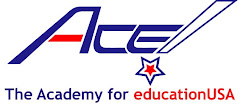Top schools lists never capture the immense diversity of U.S. colleges and universities or indicate the best fit between student and school.
There are around 4,000 accredited universities and other higher education institutions in the United States. They offer an immense range of educational experiences, from large research universities to small, friendly liberal arts colleges. This helps explain why the United States attracts more international students than any other country, says Allan E. Goodman, president of the Institute of International Education, a nonprofit group promoting student exchanges to and from America.
"While elite U.S. programs are among the best in the world,” Goodman says, “the unique strength of the U.S. higher education system is [its] diversity.”
There is no official ranking system to indicate which institutions are better than others, though several unofficial rankings are compiled by magazines and associations. However, educators urge caution in using a ranking table and emphasize that the best choice for one student may be very different from the best choice for another.
Institutions of all types are spread across the United States. Some students want a campus that will give them the excitement and rich cultural life of a big city such as New York, Chicago, or Los Angeles. Others value the tranquility and beauty of a rural setting, whether the quiet forests and snowy winters of the Northeast, subtropical Florida, the dry expanses of the West, or the Pacific coast with its seashore and nearby mountains.
Some colleges have strong athletic programs in such sports as basketball, American football, and tennis. Others afford easy access to unspoiled nature, or are near oceans or lakes where students can swim or sail.
Many institutions have particular strengths in certain academic areas, making them a good choice for students interested in those fields.
In the United States, the terms college and university are often used interchangeably, although colleges tend to be smaller and offer mostly undergraduate degrees, while universities also offer graduate degrees. Colleges are in no way considered inferior to universities.
Universities can be public or private. Private, nonprofit universities include some of the best-known institutions, such as Harvard, Princeton, and Yale. Public universities are founded and subsidized by one of America's 50 states, and by some cities. They are often very large — with 20,000 students or more — and are generally less expensive than private institutions, but out-of-state and foreign students pay more than local students.
At universities, professors may be involved in leading-edge research. But classes, especially for first- and second-year students, tend to be large and may be taught by graduate students instead of professors.
At liberal arts colleges, classes are smaller and professors tend to have more time to spend with students.
Institutes specialize in a narrow field of professional studies, such as technology, art and design, or health care. Many are private.
There are hundreds of colleges and universities affiliated with a particular religious tradition, though most of them enroll students from all religious backgrounds. The United States also has dozens of historically black colleges and universities, most of whose students are African Americans.
Community colleges offer two-year degrees in a wide variety of fields, and some provide intensive English-language instruction. They provide the least expensive post-secondary education. Students who successfully complete a community college program can often transfer to a four-year college to continue their undergraduate studies.






No comments:
Post a Comment